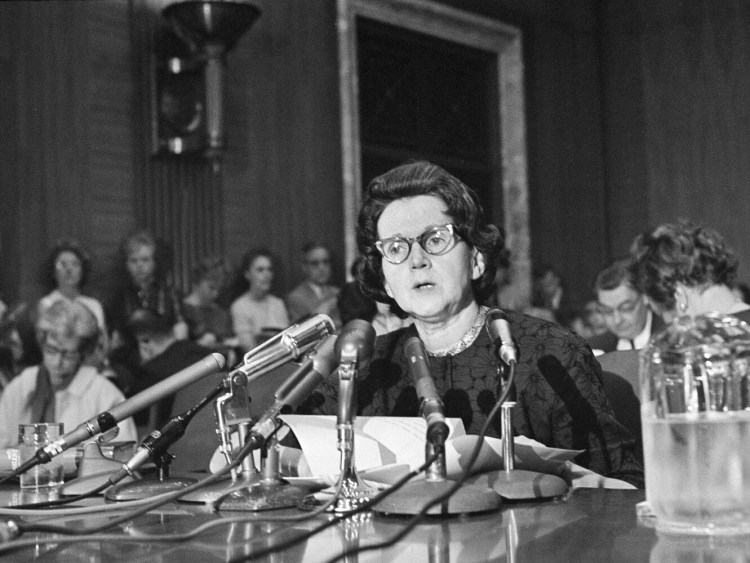Sept. 27, 1962: The publisher Houghton Mifflin releases aquatic biologist, nature writer and conservationist Rachel Carson’s seminal book “Silent Spring.”

Carson (1907-1964) was a summer resident of Maine’s Southport Island, where she owned a cottage overlooking Sheepscot Bay.
Born and raised in western Pennsylvania, she began writing as a child. Her academic career suffered because of her need to work during the Depression, and she eventually abandoned her doctoral studies at Johns Hopkins University. By 1962, however, she has written three previous nature-themed best-selling nonfiction books and has been nationally famous for more than a decade.
Copies of “Silent Spring” began circulating before its official publication date. The chemical industry was aghast about it because of its conclusion that pesticides, while necessary at some level, are harming the environment and endangering people.
The New Yorker published three long advance excerpts from the book in consecutive issues in June, raising public alarm and prompting the chemical companies to launch a campaign to discredit the book and destroy Carson. Monsanto Magazine even published a parody of the opening fable in Carson’s book, calling it “The Desolate Year.” It asks readers to imagine the horrors that might ensue if pesticides were not used.
Carson’s new book gets extensive press coverage. Reviews are largely favorable, although Sunday Book Review science writer and editor Walter Sullivan describes it as a one-sided effort to “scare the living daylights out of us” and calls it a “20th-century ‘Uncle Tom’s Cabin.’” Even he acknowledges its power, however.
With industry and government officials mounting a spirited defense of chemical use, Carson becomes a divisive figure. An episode of “CBS Reports,” “The Silent Spring of Rachel Carson,” which airs April 3, 1963, does much to burnish her image, however. Her calm, measured responses to interview questions contrasts mightily with the excited and sometimes self-contradictory tone of industry spokesmen and government bureaucrats.
Eleven years earlier, Carson bought land near West Southport while on a leave of absence from her U.S. Fish and Wildlife Service job. She arranged for her cottage to be built there, overlooking the bay and Georgetown Island, as a summer writing retreat. It was ready the next year. It was her refuge, and she became a good friend of the surprised neighbors.
By the time “Silent Spring” is out, however, Carson has been undergoing radiation treatment for breast cancer. A year after the CBS program airs, severely weakened, she suffers a fatal heart attack at her winter home in Silver Spring, Maryland.
In a 2012 biography of Carson, William Souder sums up the effect of Carson’s career and her most famous book.
“Because the environmental movement survived the end of the Cold War, the context in which it was born, Carson can be credited not only with putting the movement into motion but for doing so in a way that would allow it to eventually stand on its own,” Souder writes. “‘Silent Spring’ was many things – plea and polemic and prayer – but most important it was right. This was eventually conceded even by some early skeptics.”
The Rachel Carson National Wildlife Refuge, named for the writer, consists of 11 parcels of Maine seacoast land scattered from Kittery to Cape Elizabeth.
Joseph Owen is an author, retired newspaper editor and board member of the Kennebec Historical Society. Owen’s book, “This Day in Maine,” can be ordered at islandportpress.com. To get a signed copy use promo code signedbyjoe at checkout. Joe can be contacted at: jowen@mainetoday.com.
Comments are not available on this story.
Send questions/comments to the editors.


